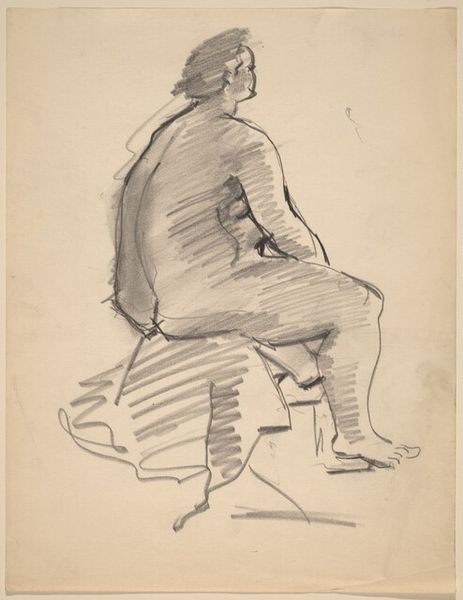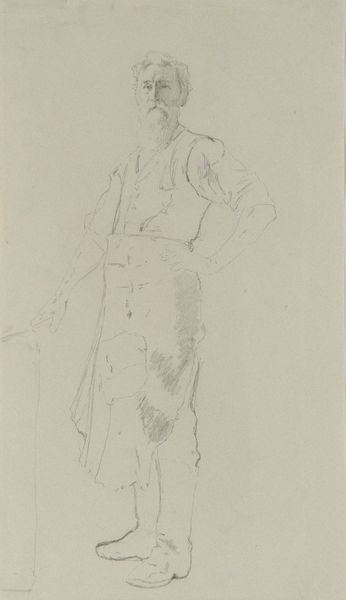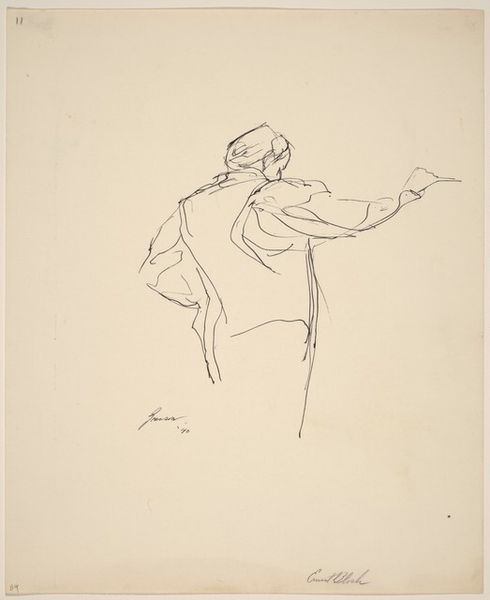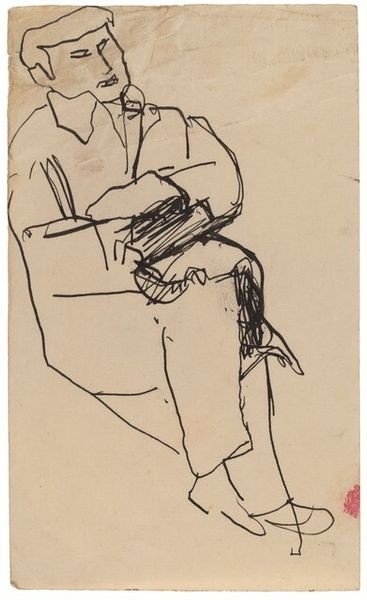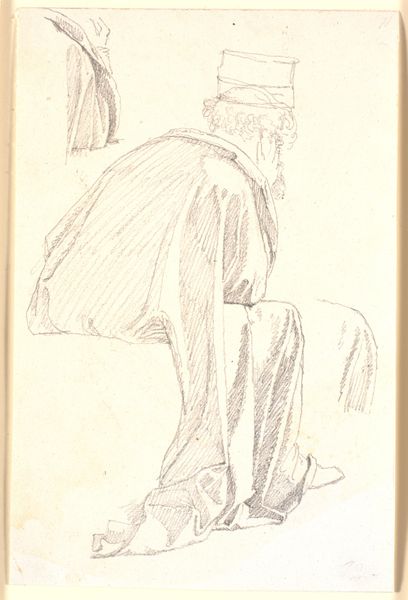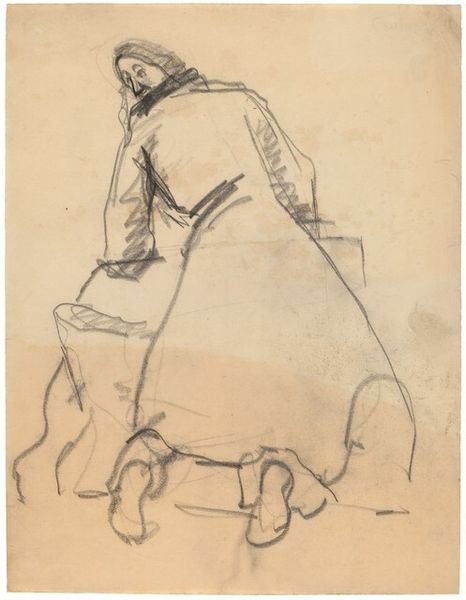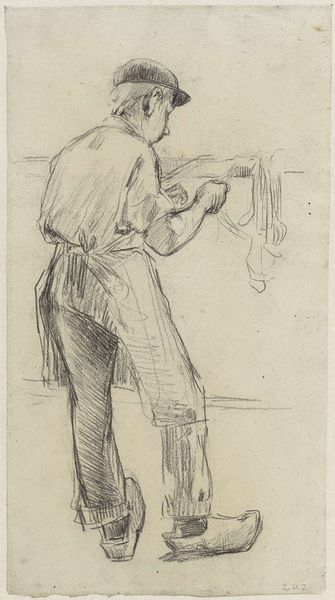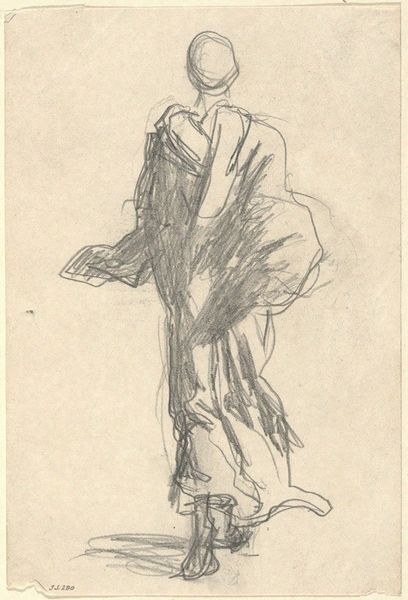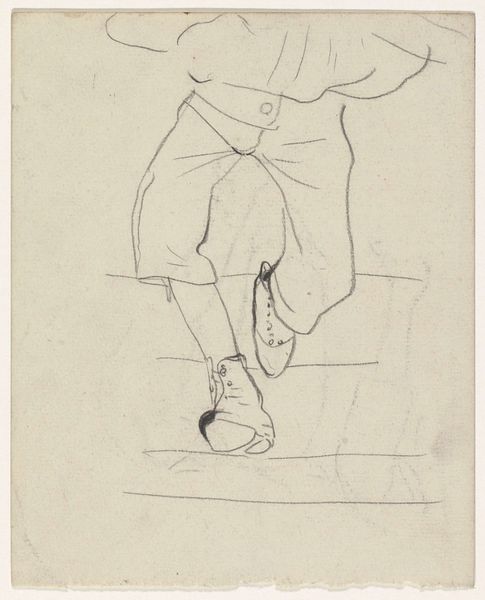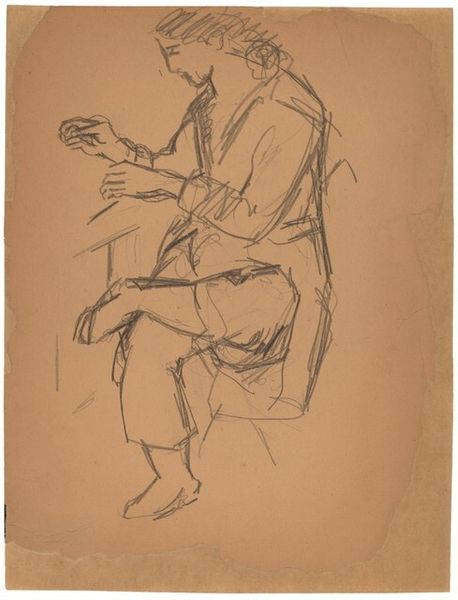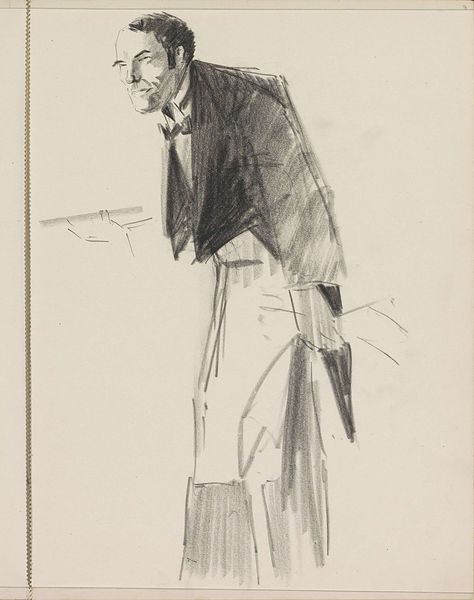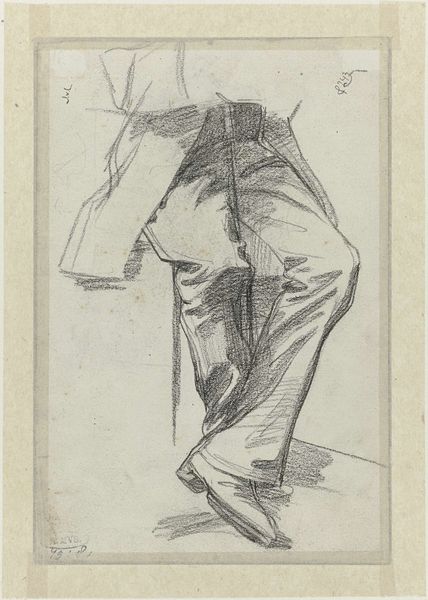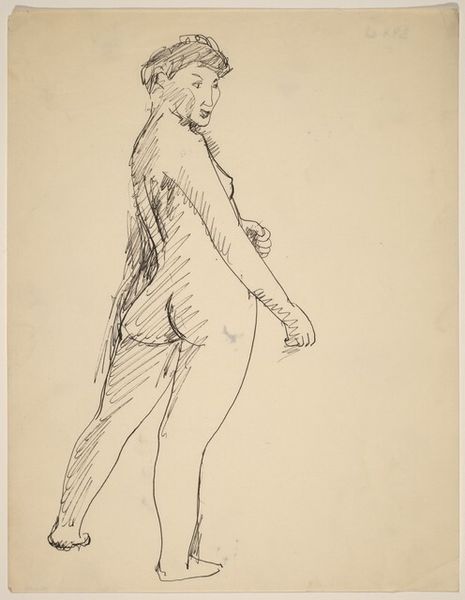
Copyright: Public Domain: Artvee
Curator: Ah, this pencil drawing feels so wonderfully fleeting. It’s titled "Gondolier, Venice," created by John Singer Sargent around 1912. Editor: It's interesting how Sargent captures this figure from behind, offering us, the viewers, a rather objective viewpoint. Immediately, the light seems gentle, almost melancholic, hinting at something deeper than just a portrait. Curator: Exactly! I see it as Sargent attempting to capture a soul, even with just a quick sketch. There’s a certain… empathy, perhaps? Venice itself was changing rapidly, and maybe he felt like this old way of life was fading. That quiet resignation in the gondolier's posture is heartbreakingly beautiful. Editor: Absolutely. Looking through the lens of critical race theory, the image prompts questions about labor, class, and the commodification of Venetian culture for tourism. The gondolier becomes a symbol, not just of Venice, but of a particular type of work and its place within the broader economic and social structures. Who is the gondolier, really, beyond this aesthetic scene? Curator: Well, beyond the symbol, I think Sargent really saw something special in him, this everyday individual, and felt the impulse to memorialize the moment. You know, art isn’t always grand statements—sometimes, it's a quiet hello. Editor: It's true, and there’s certainly a palpable intimacy achieved by the use of simple pencil strokes. I wonder, though, whether we risk romanticizing that intimacy. What would a truly equitable portrait of Venice look like, one that takes into account the full range of human experience? Curator: Ah, now you're asking the big questions! Maybe that's what Sargent hoped for when he decided to leave the subject with its back turned. A symbol for viewers to project onto. In either case, this quick sketch makes one wonder what else might have captured Sargent's creative gaze during that visit to Venice. Editor: This drawing reminds us that every artistic gesture—every observation and every absence—carries social weight and prompts new inquiry, urging us to engage more thoughtfully with representation and its politics.
Comments
No comments
Be the first to comment and join the conversation on the ultimate creative platform.
